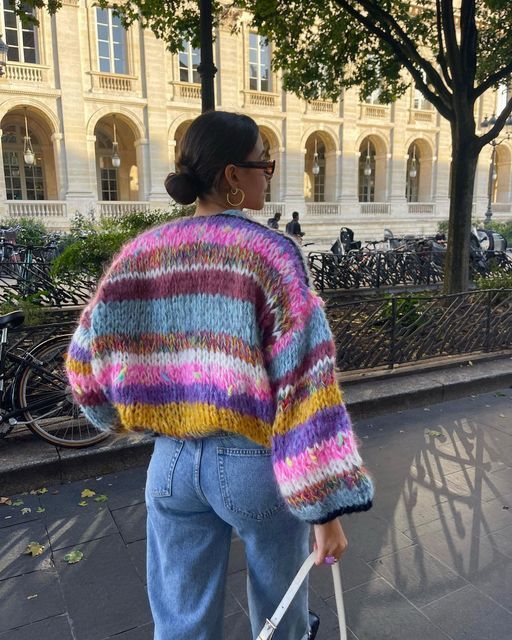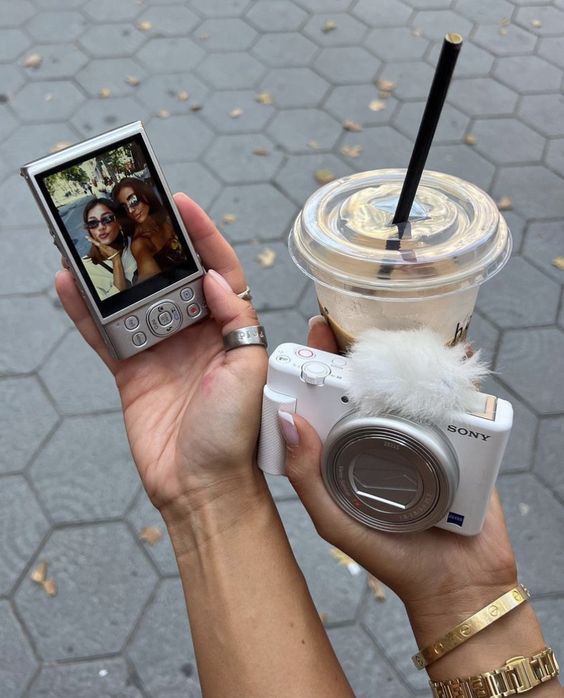Explore Categories

Jewelry
Discover elegant and modern pieces to enhance your style. From rings to necklaces, find the latest trends in jewelry design.
Shop Now

Clothes
Stay on top of fashion with the latest styles. Browse casual wear, formal outfits, and everything in between.
Shop Now

Shoes
Step into the season’s best footwear trends. Sneakers, boots, heels – find the perfect pair for any occasion.
Shop Now
Electrate Analysis: Aesthetics
Social media has had a tremendous impact on society. It enables us to see and relate to others, and often compare ourselves to them. This is where aesthetics come into play. We form ideas of what we like, based on specific aesthetics that we admire or that are trending.
With access to celebrities, musicians, bloggers, and athletes through platforms like TikTok, Instagram, and Pinterest, we can observe the aesthetics they embody. This creates a cycle of inspiration, where people attempt to recreate certain looks, behaviors, or personas based on what they see. Social media has made it easier than ever to access and pursue these desired aesthetics, right from the palm of our hand.
Digital Artifact Analysis - Social Media
Social media has changed society in many ways, making it easier for people to share information, ideas, and opinions instantly. One of the biggest impacts is how quickly trends spread. A single post or video can go viral and influence fashion, music, slang, and even social issues almost overnight. These trends shape what people talk about and pay attention to, making social media a powerful tool for setting the cultural agenda. Whether it’s a viral dance on TikTok, a challenge on Instagram, or a hashtag on Twitter, trends have become a big part of how we engage with each other online.
What Does It Mean to Be Online?
Being "online" today goes beyond simply using the internet—it means having a constant connection to the world around us. With just a smartphone or laptop, we can communicate instantly with friends, family, or colleagues, even if they’re in different cities, countries, or time zones. This connectivity has turned the internet into a bridge that breaks down physical barriers, making it easier than ever to stay connected, no matter where we are.
The convenience of being online extends to nearly every aspect of life. We can check in on loved ones through video calls, attend virtual meetings or classes from home, and stream live events happening halfway across the globe, all with a few clicks. It’s not just about communication—it’s also about access. The internet lets us explore endless opportunities, from learning new skills and exploring career options to discovering cultures and communities we might never experience otherwise.
Being online also shapes how we engage with the world. Social media, for example, keeps us updated on news, trends, and global events in real time, while entertainment platforms give us endless content to enjoy. Online shopping means we can buy almost anything without leaving home, and digital tools allow us to collaborate and create in ways that weren’t possible before.
However, this constant connection comes with challenges. It can be overwhelming to always be available, and many people find it hard to disconnect and take a break. Despite these challenges, being online has fundamentally changed how we interact, learn, and experience the world, making it a central part of our everyday lives.
Speed
The internet has made our daily lives move much faster. Whether it’s looking up information, sending a text, making a phone call, or ordering food, almost everything happens instantly. This has completely changed how we go about our day, as we’re now used to getting what we want right away with just a click or tap. Tasks that used to take a lot of time, like mailing a letter or doing research at a library, can now be done in seconds.
Because of this, we’ve become so used to speed that we get frustrated when things don’t happen as quickly as we expect. Waiting for a webpage to load, dealing with slow internet, or even standing in a long line can make us impatient. This demand for instant results doesn’t just affect us personally—it also puts pressure on businesses to deliver faster services, often making speed more important than quality.
While the internet has made life more convenient, it’s also made us less patient. It’s easy to feel stressed or rushed when everything is happening so quickly, leaving little time to relax or focus. Finding a balance is important so we can enjoy the benefits of instant access without losing our ability to slow down and appreciate the process.
Rich User Experience, UX, and Desktopization of War
We can see the changes that technology has made in society. Nowadays, humans are becoming more "lazy," and everything we create can be described as predetermined. We still use creativity, but the process is becoming so easy that when we have to develop something ourselves, we struggle. We find ourselves using the predetermined options available to us.
The different trends in society are examples of this. We follow the crowd and what is predetermined to be cool or aesthetic. We follow a pattern that others have done and experienced to ensure we fit in the mold. Although we can be creative with trends and find ones we like, we often turn to Pinterest, Instagram, and TikTok to find what is popular and get inspiration.
Clean Girl Aesthetic
The "clean girl" aesthetic is a popular beauty trend that focuses on a fresh, minimalist look, emphasizing natural beauty and effortless style. This look includes glowing skin, neatly groomed eyebrows, minimal makeup, and sleek hairstyles, like low buns or ponytails. Accessories are simple, with gold hoops or delicate jewelry adding a touch of elegance. This aesthetic has become popular on social media as it promotes a polished, put-together appearance without heavy makeup or flashy fashion, resonating with the idea of “less is more.”
Culturally, it reflects a shift towards valuing natural beauty and self-care over bold trends and dramatic transformations, encouraging people to embrace their features. However, it also raises concerns, as some people feel pressured to maintain a “perfect” natural look, which can still require time, money, and effort that not everyone can afford. Achieving this "effortless" look often involves expensive skincare routines, salon treatments, and quality makeup products, creating a standard that is accessible only to some. This has sparked debates about beauty standards and inclusivity, with critics pointing out that even “natural” beauty has become commercialized, subtly pressuring people to conform to yet another idealized image of beauty.
Meme Culture
Meme culture became very popular a few years ago. We aren’t sure exactly how it started, but it’s something that keeps growing and evolving. Initially, memes were simple jokes or relatable images shared online, but they’ve now become a major form of expression across the internet. However, it has reached a point where every meme we see is just a “remix” of another one, creating an endless chain of ideas recycled and reimagined.
This remixing is a big part of meme culture; people take a familiar image or phrase and add their own twist, making it relevant to new trends, events, or feelings. While this can be creative, it sometimes feels like originality is fading as the same templates and jokes circulate over and over. At the same time, memes have become a kind of digital language, connecting people through shared humor and experiences. But this cycle of repetition raises questions about creativity online—are we running out of new ideas, or are memes just evolving in a way that reflects how culture constantly builds on itself?
Noise in the Technological World
In today’s digital age, the overwhelming amount of information available at our fingertips often creates what is referred to as "noise." Noise is the excess of irrelevant, misleading, or superficial information that clutters our digital spaces and competes for our attention. A striking example of this is the Library of Babel, a virtual repository containing nearly every possible combination of letters and words. While it technically holds an infinite wealth of "information," much of it is meaningless gibberish, lacking context or coherence. This illustrates the distinction between information and knowledge—while information is abundant and often chaotic, knowledge is structured, contextual, and meaningful.
Noise in the technological world can distract us from what truly matters, leading to confusion and cognitive overload. It can also blur the line between valuable content and irrelevant data, making it harder to identify trustworthy sources. In a world flooded with noise, the challenge lies in filtering through the clutter to find genuine insights and wisdom. This requires critical thinking, intentional curation of content, and tools that prioritize quality over quantity. By being mindful of the noise around us, we can reclaim our focus and ensure that the information we consume enriches our understanding rather than overwhelming it.
Algorithms: Impact on Our Lives
Algorithms have a huge impact on our daily lives, and we might not even realize it. They help decide what we see on social media, what ads we get, and even what content is suggested to us. Essentially, algorithms try to put us into "categories" based on our online activity. While these categories aim to personalize our experiences, they can also make us feel stuck, as though we’re being reduced to just one aspect of our identity. This is because algorithms prioritize patterns and trends over individuality, creating a feedback loop where we are constantly exposed to similar content. Over time, this can narrow our worldview, reinforce biases, and make it harder to break out of these digital "echo chambers." This can lead to a sense of monotony, as if our interests are predetermined, and even limit our creativity and personal growth.
It’s essential to be conscious of this and take steps to avoid getting lost in the algorithmic cycle. Being aware of how these systems work can help us critically evaluate the content we consume and seek out new perspectives that aren’t algorithmically tailored to us. For example, actively following diverse creators, exploring content outside of our usual preferences, and engaging with topics that challenge our viewpoints can help break the cycle. Additionally, limiting screen time and prioritizing offline interactions can reconnect us with our multifaceted selves, reminding us that we are more than the digital profiles algorithms create.
Algorithms also categorize us into predefined groups—such as "fashion enthusiast," "sports fan," or "tech geek"—based on what we like, watch, or buy. While this can make our online experiences feel tailored, it can also oversimplify our identities. People are complex, with interests and values that cannot be fully captured by a single category. These categorizations can influence our behavior and the trends we follow, shaping how we see ourselves and how others perceive us. For instance, we might feel pressured to stick to certain trends or interests because they align with the "category" we’ve been placed in, even if they don’t fully represent who we are.
The right way to use algorithms would be to ensure they empower us rather than confine us. Algorithms should encourage exploration, promote diversity, and introduce us to ideas, cultures, and communities outside our usual bubble. By thoughtfully designing algorithms to present a balanced mix of familiar and novel content, we can foster meaningful connections and growth. Ultimately, algorithms should be a tool for discovery and understanding, helping us see the richness of human experiences while reminding us that we are far more complex than any data point can capture.
FINAL REFLECTION
In the age of electracy, where our identities are increasingly shaped by digital spaces and technologies, our sense of self is being redefined. The electric world introduces both opportunities and challenges, fundamentally altering how we perceive ourselves and interact with others. Here are the key dimensions of this impact
THE IMPACT OF SENSE OF SELF - Living in an electric world can distort one’s sense of self, making it feel as though we are merely a small cog in a vast, impersonal system. The constant influx of information, comparisons, and demands for engagement often leads to feelings of being lost or stuck—unsure of what we truly want to do or capable of moving beyond our perceived limitations. Our desires and goals become tangled in the algorithms that dictate what content we see, leading us to question the authenticity of our choices.Electracy reduces individuals to metrics: follows, likes, comments, views, and content production. These quantifiable markers of social validation become the yardsticks by which we measure self-worth. While they can bring moments of affirmation, they often contribute to a fragile self-concept that is deeply dependent on external feedback
WHAT ELECTRACY DOES TO US - The effects of living in an electric world are profound, touching upon mental health, body image, and our relationship with time.
TikTok Tics and Dysmorphia: Platforms like TikTok highlight how digital spaces blur the line between trends and individuality. From mimicking behaviors to succumbing to distorted beauty standards, the pressure to fit into ever-evolving aesthetic ideals can foster dysmorphia and dissatisfaction with one’s physical self.
Depression and Time Distortion: The curated perfection of electracy often deepens feelings of inadequacy and depression. We lose track of “time-self”—the ability to balance present joy and long-term fulfillment—caught between consumption and production in digital spaces.
SELF LECTACY: A FRAGMENTED SELF
Consumption: Identity becomes tied to the things we consume—products, media, and trends.
Digital Body: The self extends into a virtual form, polished and curated for public consumption, often at odds with our physical reality.
Pleasure/Pain: Electracy heightens the tension between seeking validation (pleasure) and the pain of comparison or rejection.
Aesthetic Allegiances: People align with visual and cultural aesthetics that dictate their choices, limiting their ability to explore beyond their allegiance to a particular “look” or trend.
IS THERE SPACE FOR CHRISTIANITY IN THE TECHNOLOGICAL WORLD
In a world defined by electracy, there remains room for faith, but it requires rethinking how Christianity engages with technology. Faith communities must embrace technology as a tool rather than a competitor. For example, digital platforms can serve as spaces for outreach, connection, and sharing messages of hope.Christianity offers a counter-narrative to the fragmented identity of electracy by emphasizing intrinsic worth, purpose, and belonging outside of metrics like likes or views. It re-centers the self on spiritual truths rather than transient digital markers. However, this requires individuals and communities to navigate the tension between participating in the digital age and maintaining a sense of sacredness and authenticity.
Living in this electric world transforms how we see ourselves, often reducing our identity to numbers, trends, and visual aesthetics. While electracy can lead to creativity and connection, it also fosters mental health struggles, a fragmented self, and challenges to our sense of purpose. Christianity and other belief systems have the potential to provide grounding in this fast-paced, image-driven environment, offering a space to reclaim a sense of self rooted in something deeper than the metrics of the digital age. Balancing the electric world with intentionality, reflection, and spiritual awareness may be the key to navigating its complexities.






